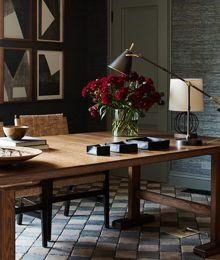Interior Designer Marketing Tips – Learning When to Say No
The oft-spoken phrase, “Variety is the spice of life” can mean many things, based on context and one’s openness to diversity. In a service business like yours, it may refer to the range of services you offer, but it may also describe the types and dissimilarities of clients you serve. In that case, variety may be problematic. When considering how diverse clients can be, helping you figure out when to say “Yes” and when to say “No”, may be one of our most important interior designer marketing tips. First, it’s true that there are times when the best thing you can do is refuse to work with a prospective client, regardless of the size or appeal of the job they have. Stated simply, some projects just aren’t worth the hassle.Taking the lead from an article at Houzz.com, the reasons for occasionally saying no to a client are pretty clear:“Not all clients who come your way are a good fit. Maybe they don’t have the budget to get the job done properly. Perhaps they don’t have a clear vision for what they want and keep changing their minds. Or maybe they’re looking for services you can’t provide.”While these are not the only reasons you may want to decline a design job, they are the most common. So, when you feel hesitant about accepting the work they need done, even if you're not 100% sure why, choosing to decline the project – politely – is the best way to avoid regrets in the future.For nearly anyone in a service business, the following experience is likely familiar: The more your client hears you say “Yes” to something, the more demanding they become. In the design business, this can quickly blow up a budget and make it impossible to finish the project on time.And yet, refusing a job can seem impossible because:
First, it’s true that there are times when the best thing you can do is refuse to work with a prospective client, regardless of the size or appeal of the job they have. Stated simply, some projects just aren’t worth the hassle.Taking the lead from an article at Houzz.com, the reasons for occasionally saying no to a client are pretty clear:“Not all clients who come your way are a good fit. Maybe they don’t have the budget to get the job done properly. Perhaps they don’t have a clear vision for what they want and keep changing their minds. Or maybe they’re looking for services you can’t provide.”While these are not the only reasons you may want to decline a design job, they are the most common. So, when you feel hesitant about accepting the work they need done, even if you're not 100% sure why, choosing to decline the project – politely – is the best way to avoid regrets in the future.For nearly anyone in a service business, the following experience is likely familiar: The more your client hears you say “Yes” to something, the more demanding they become. In the design business, this can quickly blow up a budget and make it impossible to finish the project on time.And yet, refusing a job can seem impossible because:
- You fear losing a current or potential client
- You fear getting a bad reputation
- You fear hurting their feelings
And yet, over-committing to difficult clients can just as easily cost you work, ruing your rep, and upset the person whose project you struggled to finish on time and on budget!How to Say “No” to a ClientWhen you decide that a design project is not right for you, letting the client know requires tact and a clear explanation if you want to protect your reputation. Explain your reasons calmly and rationally and let them know it’s not “personal”, even if it may be (for example, you think there may be a personality conflict).Whatever the reason may be, if you believe a particular design project (or client) isn’t a great match in the moment, it doesn’t mean they can’t be a valuable resource for your business. By letting them down easy, and if you avoid bruising their ego, they may be willing to work with you again in the future, or possibly offer referrals.Here are a few tactics you can use to gently say “No” to a client:
- Explain that your menu of services does not include exactly what they’re looking for.
- Introduce them to a designer or contractor who can accommodate their needs more easily than you can.
- Let them know that, because your schedule is already full, you simply do not have the time to handle such an important project the way you want to.
While it may seem counter-intuitive to refuse to work with someone who wants to pay you, as a smart business owner you must also protect your own interests. Even though you want your clients and prospects to like you, to have them give you referrals, and to have them believe you can “do it all”, there will be times when the best choice to make is to say, “No thank you”.NOTE: In common use, the common use of the introductory phrase is incomplete. It’s a paraphrasing of the line that comes from William Cowper's poem, “The Task” (1785), which actually reads, “Variety is the very spice of life, That gives it all its flavor.”Looking for more interior designer marketing tips, design trends, and product ideas? Get in touch with TD Fall today.
